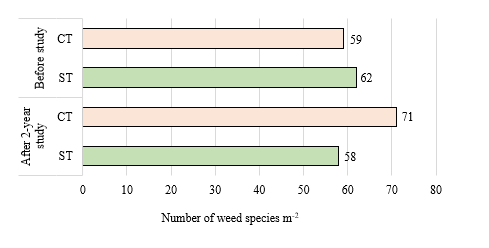A Pilot Project in Primary Care- Using Virtual Reality Guided Meditation Sessions to Reduce the Burnout of Health Workers
Introduction
This February we´re starting an exciting project in Badalona, Spain, at the primary care health center (CAP apenins-Montigalà). The objective of this project is to assess the reduction of the level of burnout and improve the work engagement of primary care workers with the intervention of individual mindfulness sessions in an immersive virtual reality environment using virtual reality (VR) glasses. A reduction in the level of Burnout and an improvement in the level of work engagement are expected at the end of the meditation sessions. The practice of meditation should give the subjects a sense of well-being and the opportunity to face the demand for care with a new, more positive perspective, gaining a better ability to self-regulate their own emotions. The mental health of our primary care workers is affected due to the workload, the demand for care and the difficult socio-economic situation of the local population. Currently this panorama has worsened with the negative emotional charge resulting from the Sars covid-19 pandemic [1,2]. When these working conditions and the demands of a complex work environment endure over time, they are likely to cause an imbalance between the work demands and the personal resources. This can lead to developing symptoms such as exhaustion, fatigue, job dissatisfaction, chronic stress, etc. That situation causes a poor quality of care provided to the patient, an increase in errors and a negative work environment [2].
The burnout syndrome (BO) among health workers has been well known for years and has only been accentuated recently. It is directly related to another concept called “work engagement” (WE), which would be the level of work commitment of each person. Some recent studies highlight the high BO of Primary Care (PA) workers. In the PA centers of Asturias it has been found that more than one in 2 doctors are burned out [3]. Therapies with guided meditation, especially with the mindfulness technique, have already been validated as a tool to improve mental health and promote the well-being of professionals, mainly in jobs with a high stress load such as primary care [4]. The scientific evidence of the mindfulness meditation technique is reported in various studies and reviews that support that it´s effective in reducing burnout [5]. Mindfulness is a meditation technique that consists of observing the present moment. The goal of mindfulness is to achieve a deep state of consciousness free of judgments about our sensations, feelings or thoughts, paying attention to what happens inside us at all times. With this new personal tool, one will be able to face adverse emotional events with more peace of mind, generating a sense of balance and well-being. Ultimately these personal changes and self-awareness in clinical practice reduce symptoms of stress and burnout and increase well-being and compassion among physicians and patients [6,7].
In recent years we have seen an accelerated advance of technology related to virtual reality. The medical and healthcare field is one of the fastest growing in the use of these new tools. In many organizations it has become a very important resource to address and improve the quality of the work environment [8]. Virtual reality (VR) is a simulated experience that can be similar to or completely different from the real world. The Virtual reality environment provides an immersive experience that allows the user to interact with scenarios and objects that simulate reality, thanks to the use of advanced computer technology. Virtual reality (VR) helps capture participants’ attention and offers users the illusion of “being there” in the 3D computer-generated environment. This immersion in the session transports conscious attention to an environment created to facilitate relaxation, which can be very useful especially for people with difficulty in concentrating attention [9].
Methodology
The intervention consists of individual mindfulness therapy sessions, once a week, for 8 weeks. The sessions are conducted in a virtual 3D environment using the VR glasses, supervised by the researchers. Specific questionnaires will be passed to measure the variables at the beginning and end of the study:
a) Maslach Burnout Inventory (MBI) [10,11].
b) Utrecht Work Engagement Scale (UWES) [12-15].
The sessions will be held in a new space we’re calling our Immersion room (see photo below), where the participants will be accompanied and assisted to wear the glasses and access the simulation. The environment is composed of an immersive virtual scenario in nature in the format of an island. The participant enters the built-in environment as a generic avatar (Figure 1). Upon arrival the users will find two teleportation buttons that will take them to one of the two predefined stations for the meditation. They can choose to follow the guided meditation facing the beach with sound from the waves, or by the river and mountains with a waterfall. The visual environment and guided meditation will be created by Dr Ferrer using Blender and Unity software, then uploaded to an immersive online system. As from the 21st of February 2022 we have finally started our guided sessions and so far the feedback from the users is all positive. We´re hopeful that this project will help our workers to find a healthier way to live the work demands and stressful situations. I hope by sharing the idea of the project more people will be interested and encouraged to start innovative local projects.



No comments:
Post a Comment
Note: Only a member of this blog may post a comment.